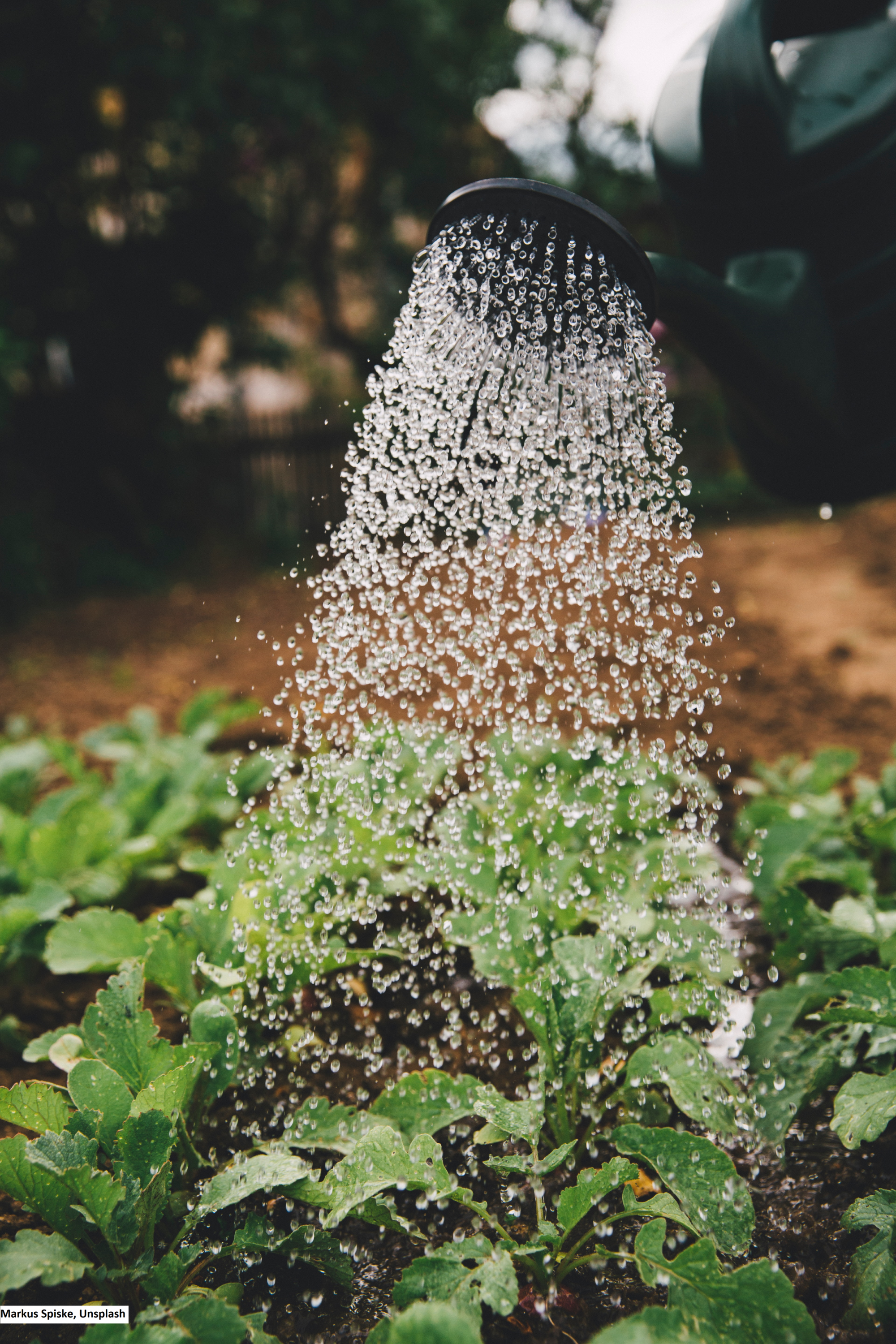If you’ve started looking into installing a drip irrigation system or a soaker hose in your garden, you’ve probably read that one of the main perks of drip irrigation is the prevention of soil erosion. So what do we mean when we say that drip irrigation prevents soil erosion?
The answer comes down to water conservation. A level of water applied to soil above the soil’s infiltration rate will cause the water to pool, then run off, carrying some soil with it. Over time the soil erodes and becomes less fertile.
Drip irrigation prevents runoff by slowly applying less water to targeted areas of your garden that need water most.
Why Is Soil Erosion Bad in a Garden?
You might think that soil erosion is a problem that only large-scale farmers have to worry about. That’s not the case!
Soil erosion happens in gardens whether it’s in a backyard raised bed or in a 2-acre plot. And it hurts your plants’ health regardless of the size of your garden.
That’s because when there is water runoff, the water takes with it the topsoil, which is the top 5-10 inches of your garden,
Topsoil is the most nutrient dense soil in your garden because it contains most of the dead organic material in your soil. It may not sound appetizing to us, but that’s the richest form of nutrients for your plants.
This makes sense when you stop to think about it. Living organisms require oxygen, which is going to be more easily accessible in the top 5-10 inches of the soil. Therefore, those organisms will likely lay to rest in the topsoil, rather than the subsoil below.
That’s why you don’t want water flooding your garden. When it spills out the side of your raised bed or floods, it takes all those nutrients with it. Your plants need them to stay healthy!
Avoiding Runoff Saves Water
Runoff is essentially allowing water to leave your garden needlessly. Not only does it take nutrients with it, but it isn’t used by the plants its intended for!
When water leaves your garden, it bypasses the roots of your garden’s plants and goes on to feed weeds, evaporates, or trickles down to the subsoil where most plants’ roots can’t reach. That’s a waste of water!
Keep in mind that runoff is depleting your garden of nutrients too, so you’ll end up having to fertilize your garden more to keep it healthy.
Lastly, drip irrigation delivers water to your plants roots slowly. This ensures that your plants can use most of the water that’s delivered to them. Like humans, plants can only drink so much water at a time. Remember, just because your soil is soaked doesn’t mean all that water winds up in your plants.
Bottom Line: Water runoff in your garden hurts the environment and your bank account.

More On Why Excess Water in your Garden is Bad
We covered why excess water causes runoff which depletes nutrients & your soil. But there are other things happening when you get too much water in your garden that you want to avoid.
1) Disease Prevention
When you water you plants by hand, as shown in the photo above, more water winds up on your plants’ leaves & stems. This leaves them more prone to disease.
Bacteria, like humans, need water to thrive & survive. Leaving standing water on your plants leaves gives bacteria a better chance to make a home in your garden and cause damage to your plants.
2) Weed Reduction
Drip Irrigation will allow you to localize your watering to the plants you’ve placed in your warden. Excess water between your plants, however, allows unwanted weeds to grow.
Unwanted weeds, if left unchecked, will both deplete nutrients from your soil and steal sunlight from your garden plants if they get big enough.
Bottom line: Excess water allows more weeds to grow, which you’ll need to spend more time picking to ensure garden health. More weeds = more work.
Want to Give Drip Irrigation a Try?
No that you’ve learned about how drip irrigation prevents soil erosion and saves water, hopefully you’re convinced that installing a drip system is worth it. Time to explore a few ways to get started.
It’s tempting to try Amazon’s recomended starter kit. You’d get it right away and it’s cheap. However, it’s missing some key components, such as a backflow preventer and pressure regulator. These help to ensure a long-lasting irrigation system, so be sure to buy those in addition to the kit.
You could also go to your local hardware and buy all the components separately. This may save you a little money, but you’ll want to do some research to find out exactly what you’ll need.
What I’d recommend is buying a kit directly from a company who specializes in drip irrigation. I’ve personally used Drip Depot’s service to get my system up & running and it was fantastic. They have excellent starter kits, perfect for gardeners setting up a system for the first time. I’ve had mine for about 5 years and it’s still running strong.
They also have an excellent service team who are there to help if you need some advice or have problems getting your system set up. That’s something you might not get buying through Amazon.
Click the link below to find out more about what Drip Depot has to offer.
No matter how you choose to get set up, just reading this article was a big first step in saving you time, money, and making sure your garden soil is as fertile as possible.
If you have any other thoughts on how drip irrigation prevents soil erosion, please leave them in the comments below.
Thanks for checking in with Home & Garden Talk!



3 thoughts on “How Drip Irrigation Prevents Soil Erosion in Your Garden”
Comments are closed.